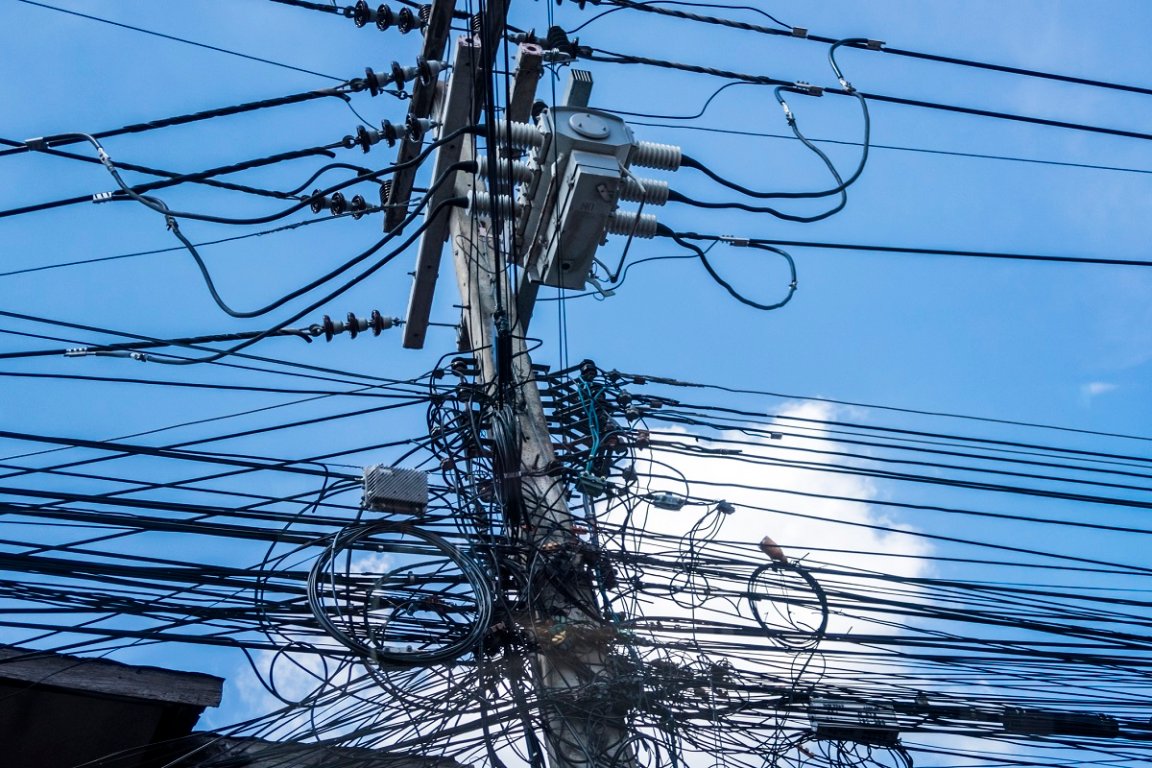
Thousands of abandoned telephone cables throughout the US are likely leaching toxic lead into American soil and waterways, an extensive new report by The Wall Street Journal has revealed.
These leaded cables, which were used and later left behind by the likes of telecom giants Verizon and AT&T, among others, have reportedly contaminated a number of major rivers, including the Mississippi River in Louisiana, the Detroit River in Michigan, the Willamette River in Oregon, and the Passaic River in New Jersey. As a result, lead has found its way into playgrounds, lakes, and backyard bayous.
Worse yet, based on documents reviewed by WSJ and interviews with former employees, the companies were well-aware that the lead in the cables posed a threat to their workers and stood to seep into their surrounding environments over time — and yet made no meaningful effort to counter the health risk.
Per the report, the issue has yet to be addressed by environmental regulators.
The report’s findings “suggest there is a significant problem from these buried lead cables everywhere,” Linda Birnbaum, a former EPA official and director of the National Institute of Environmental Health Sciences, told the WSJ. Worse, she said, “it’s going to be everywhere and you’re not even going to know where it is in a lot of places.”
Lead is incredibly toxic, and US regulators and other government bodies have been working to redress the environmental prevalence of the material for years. It’s been connected to reproductive issues; brain, kidney, and liver problems; and is extremely dangerous for children, whose malleable brains are especially vulnerable to lead poisoning. Kids exposed to the heavy metal can often wind up with developmental problems ranging from behavioral disorders to learning disabilities.
And yet lead exposure remains persistent, especially in young children. As the WSJ notes, a Quest Diagnostics study from 2021 revealed that one in two American kids under six have detectable levels of lead in their blood.
“A new, uncontrolled source of lead like old telephone cables may partly explain” this phenomenon, Jack Caravanos, an environmental public-health professor at New York University who assisted with the report, told the WSJ. “We never knew about it so we never acted on it, unlike lead in paint and pipes.”
In its reporting, the WSJ discovered a vast network of more than 1,750 underwater lead-covered cables, while an analysis of the country’s five most populated states and over a dozen of its most populated counties revealed about 250 aerial lead-covered cables, often located next to schools and bus stops. Per the newspaper, most of the cables were laid by American Telephone & Telegraph — AT&T’s predecessor — in the late 1800s through the 1960s, and there are likely many more leaded cables to be discovered across the nation.
Of these thousands of cable sites, WSJ reporters visited about 300. Hundreds of environmental samples were independently tested, and researchers were reportedly able to confirm that the lead they contained likely came from cables.
We’re also not talking about infinitesimal amounts of lead, either. A sample taken from California’s Lake Tahoe, for example, was more than 2,533 times the EPA limit for drinking water, which is a risk for swimmers as well as for marine life. Elsewhere, a water sample from New Iberia, Louisiana’s Bayou Teche contained 7.4 lead parts per billion, a number that dangerously exceeds EPA guidelines. Eroding underwater cables were found at both sites.
“We have not seen, nor have regulators identified, evidence that legacy lead-sheathed telecom cables are a leading cause of lead exposure or the cause of a public health issue,” said USTelecom, an industry group that represents phone companies in the US, in a statement.
Verizon, for its part, said it was “taking these concerns regarding lead-sheathed cables very seriously,” adding that “there are many lead-sheathed cables in our network (and elsewhere in the industry) that are still used in providing critical voice and data services, including access to 911 and other alarms, to customers nationwide.”
AT&T, which settled a lawsuit over the Lake Tahoe cables in 2021, took a decidedly more confrontational approach.
“The health, safety and well-being of our people, our customers, and our communities is of paramount importance,” AT&T told the WSJ in a statement, adding that the report’s findings “conflicts not only with what independent experts and longstanding science have stated about the safety of lead-clad telecom cables but also our own testing.”
Internal AT&T correspondence reviewed by the WSJ, however, tells a different story.
“Underground cable presents real possibilities for overexposure” for workers removing them, AT&T said in a 2010 presentation about employee safety, according to the WSJ. “Some older metropolitan areas may still have over 50 percent lead cable.”
The whole investigation is deeply concerning, and the WSJ has provided a lot of compelling evidence. Regardless of what action is ultimately taken, it’s a harrowing reminder that when old technologies phase out, they don’t simply disappear. Whether in the form of piles of e-waste or lead-encased phone cables, the corpses of technology’s past often linger. And in this and other cases, they continue to cause real harm.
“You just need a little dirt on your fingers to put into your mouth and ingest,” Caravanos told the WSJ, “and you get an elevated blood lead above the CDC level of 3.5.”
More on recent environmental revelations: Nearly Half of US Tap Water Laced with Toxic “Forever Chemicals,” Scientists Find